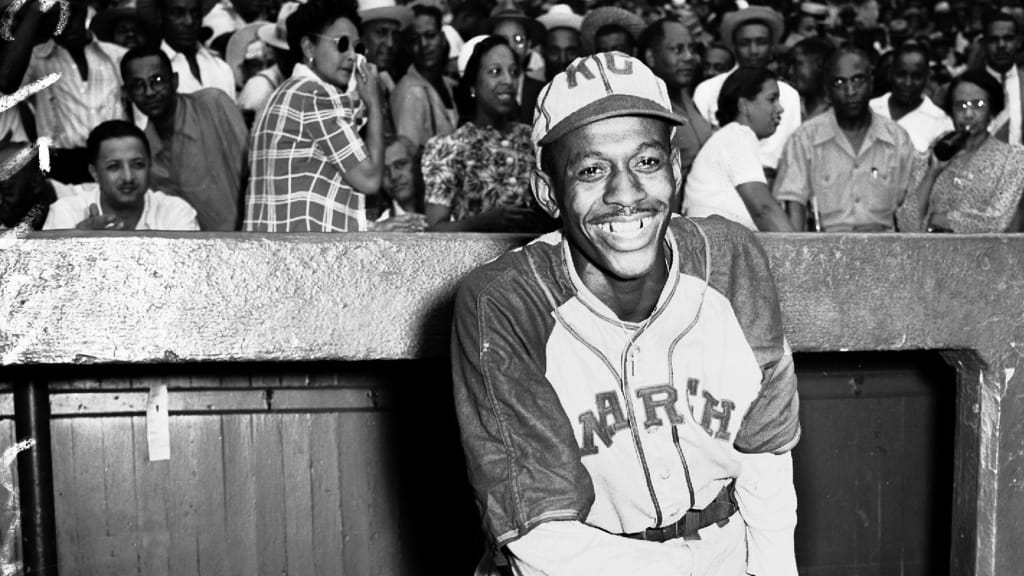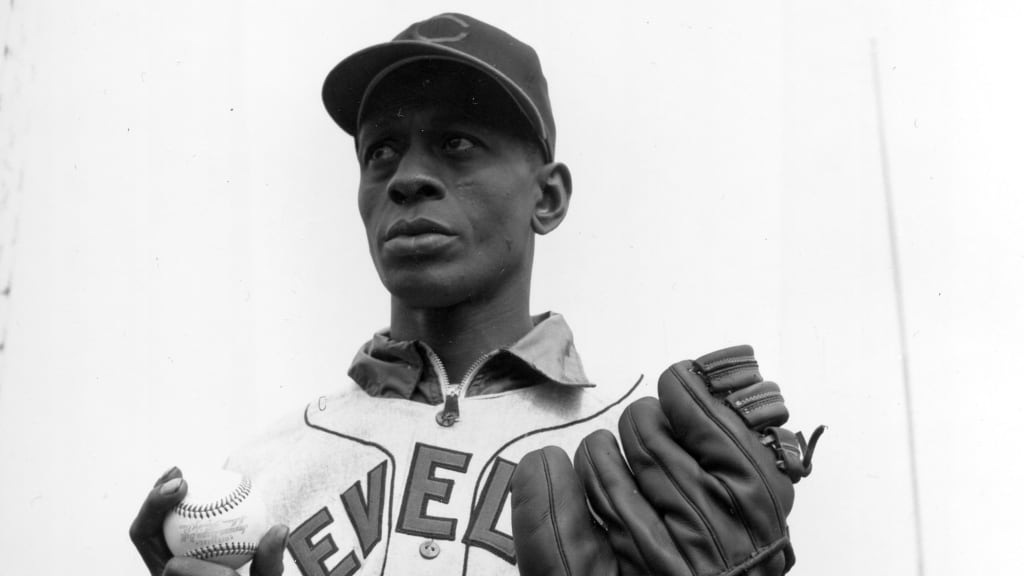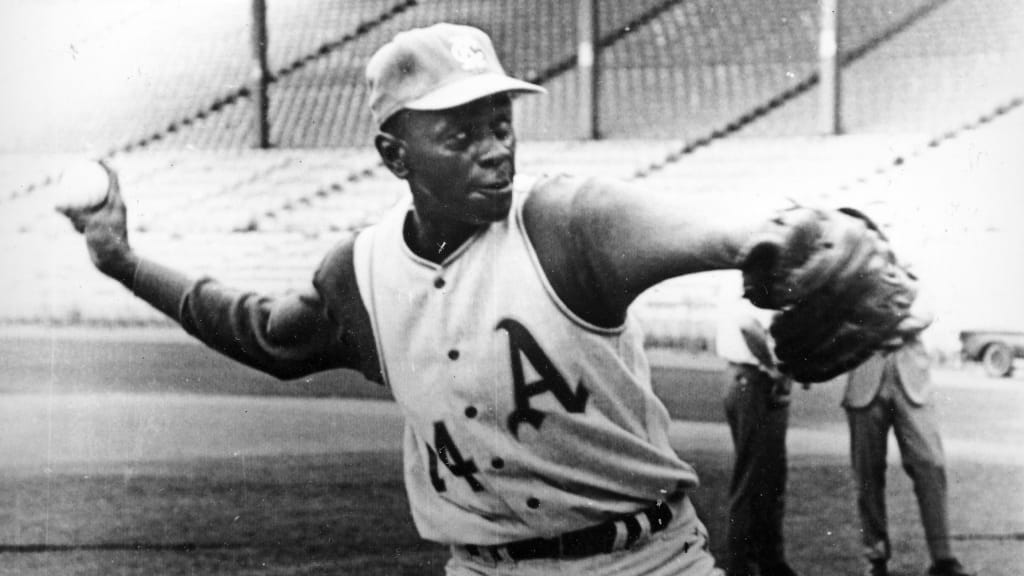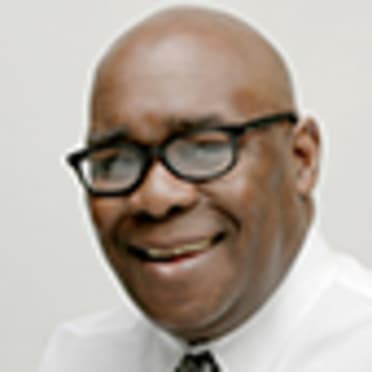
The Negro Leagues Baseball Museum is celebrating the 100th anniversary of the founding of the Negro Leagues, and MLB.com’s Bill Ladson has written a series of articles on some of the league’s legends. This one is about right-hander Satchel Paige. Everybody knows how great he was on the mound. But there were seven Negro League teams and four independent teams he called home -- not to mention his stints in Cuba and the Dominican Republic. All this happened before he signed a Major League contract with the Cleveland Indians in 1948.
NEW YORK -- The legend of Satchel Paige is well known. Not only was he the best pitcher in Negro League history, he was a rock star. It’s safe to say that he never pitched in front of an empty seat during the peak of his career.
Paige was the Pedro Martinez, the Justin Verlander, the Gerrit Cole of his day -- in other words, he was the pitcher of his generation. If Paige was doing his thing on the mound today, current stars such as Mike Trout, Aaron Judge and Cody Bellinger would be challenged by Paige’s blazing fastball and mesmerizing breaking ball.
Paige was best known for his time with the Kansas City Monarchs, helping them earn a Negro League title in 1946. But besides Kansas City, according to Baseball-Reference, Paige played for six Negro League teams and four independent teams affiliated with the Negro Leagues from 1927-47. Paige was a gate attraction and didn’t care where he played, as long as he was making top dollar and getting a cut of the gate.
Paige also played in his share of barnstorming games, where stats were not kept, as noted by Larry Tye, author of “Satchel: The Life and Times of an American Legend.” His battles against Hall of Famer Dizzy Dean on the barnstorming circuit are legendary, and Dean was impressed with what he saw from his counterpart.
“If Old Satchel and I played together, we’d clinch the pennant mathematically by the Fourth of July and go fishin’ until the World Series. Between us, we’d win sixty games,” Dean said.
As a gate attraction, Paige would demand appearance fees and a cut of the draw, according to the Bob Kendrick, president of the Negro League Museum.
“Satchel would go where he was wanted, and everybody wanted him,” Kendrick said. “The entire town would shut down to watch [him] pitch. His reputation preceded him. Satchel was a transcending kind of star.”
According to Baseball-Reference, Paige’s career started in 1927 with the Birmingham Black Barons at age 20. He was with Birmingham for three-plus years before playing for the Chicago American Giants and Baltimore Black Sox in 1930, which was arguably his best season. Playing with those three teams as a 23-year-old, Paige won a combined 30 games, had 30 complete games and 285 strikeouts.
The next year he went on to play for the Cleveland Cubs and Pittsburgh Crawfords, with whom he stayed until 1934. Those Crawfords teams of the early 1930s are considered among the greatest in baseball history, featuring other greats like Josh Gibson, Oscar Charleston, Judy Johnson, Cool Papa Bell and Double Duty Radcliffe.
After a brief stint with the Cuban House of David, an African-American team that played in the United States, Paige had his first stint with the Monarchs for the 1935 season, before returning to the Crawfords in 1936. Between 1937 to ’39, according to beyond the boxscore.com, Paige played in the Dominican Republic, Mexico and Puerto Rico, where he was a paid more than he received in the Negro Leagues.
“Pitchers like Satchel come along once every generation. That’s why I say, there will never be another Satchel Paige. You can maybe make a case that some pitchers were just as good as Satchel, but there was no one better than Satchel Paige,” Kendrick said.
Paige was 41 when his playing days in the Negro Leagues ended after the 1947 season. Jackie Robinson had just broken the color barrier, and Paige decided to take his chances in the Major Leagues. At that time, many scouts wondered how old he really was and if there was enough in the tank to get Major League hitters out.

Indians owner Bill Veeck took a chance and signed Paige for the 1948 season. As it turned out, Paige was a productive pitcher for Cleveland as a starter and reliever, going 6-2 with a 2.48 ERA as part of the last Indians World Series championship team. He was the first African-American to pitch in the World Series, with his only appearance in the Fall Classic occurring in a Game 5 loss to the Boston Braves. He pitched 2/3 of an inning without allowing a run.
“Satchel took a pay cut to go to the Major Leagues. He wanted to prove to the world that he was better than anybody,” Kendrick said. “It would have been easy for everybody to say he was too old, but not Bill Veeck. I don’t know if Veeck knew the old man still had gas in the tank, but the old man still had some gas in the tank. He could still get it done.
“I do know if Veeck knew that Satchel would be a huge gate attraction. You go back look at that 1948 season. Cleveland doesn’t get to the postseason or go to the World Series without Satchel.”
Paige stayed with the Indians for the 1949 season, going 4-7 with a 3.04 ERA in 31 games (five starts) at age 42. After a season with the Minot in the Manitoba-Dakota League, he and Veeck reunited with the St. Louis Browns from 1951-53. In his final full season in the Major Leagues, at age 46, Paige went 3-9 with a 3.51 ERA (an ERA+ of 119) over 57 games (four starts). Amazing, there was one appearance yet to come.
Paige continued to play in various leagues for another 13 years, finally ending his days as a professional baseball player in 1966 at the age of 59. But Paige’s last Major League game was a night to remember.

On Sept. 25, 1965, Kansas City Athletics owner Charlie Finely decided to host a Satchel Paige Night to help boost sagging attendance. The A’s hadn’t had a winning season since 1952, when they were still in Philadelphia, and Paige was still a legend in Kansas City. Finley signed Paige for $3,500 and promised fans that he would pitch on this night.
Finley went all out on the promotion, bringing in former Negro Leaguers like Buck O’Neil, Hilton Smith, Cool Papa Bell and Bullet Joe Rogan, according to sabr.org. The team had a rocking chair on the field for Paige, who was then 58 years old, and rubbed down his arm for the 9,289 fans in attendance.
The real show started, however, when Paige took the mound to start the game vs. the Red Sox. He needed just 28 pitches to mow down nine of the 10 batters he faced in his three innings, allowing only a double to Carl Yastremski.
In 1971, Paige was elected to the Baseball Hall of Fame by the Negro League Committee. He passed away in 1982 at age 75.
